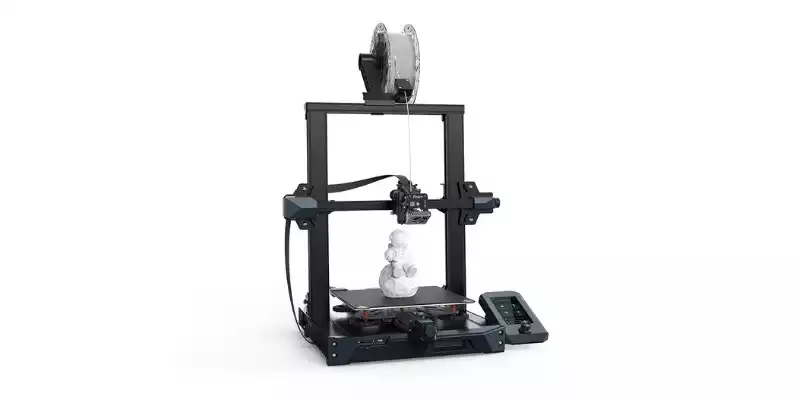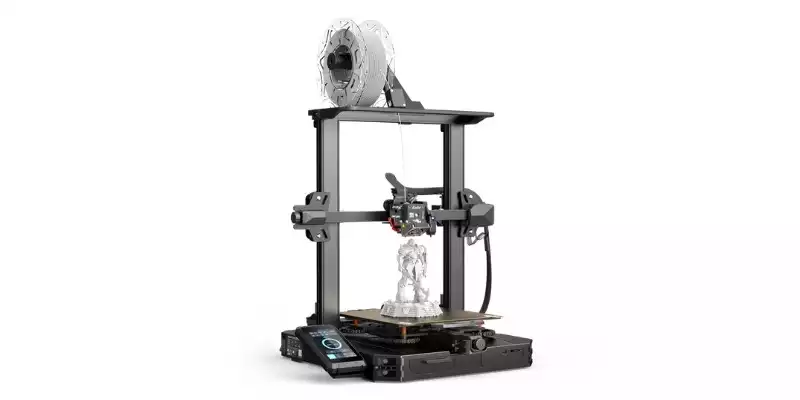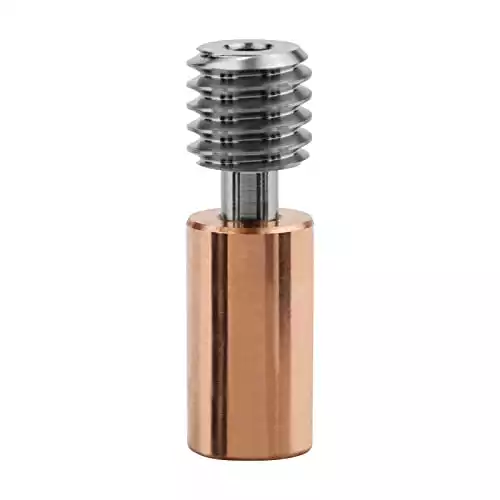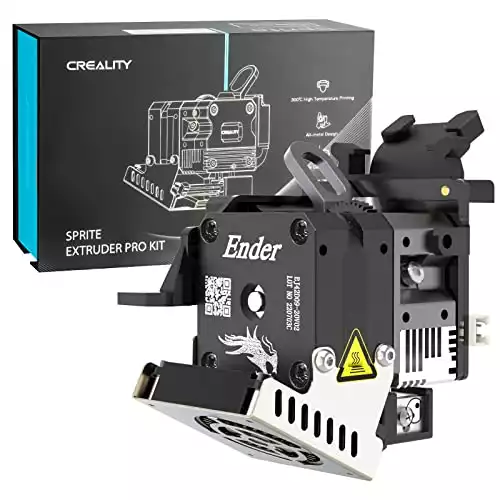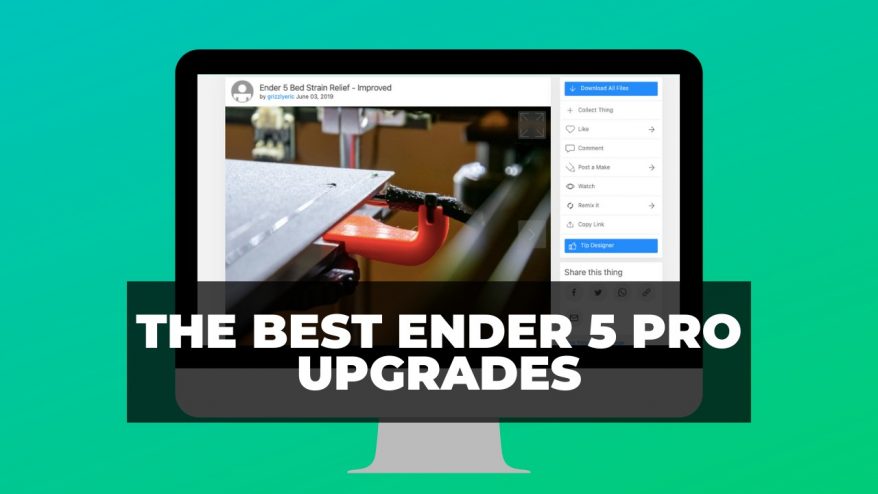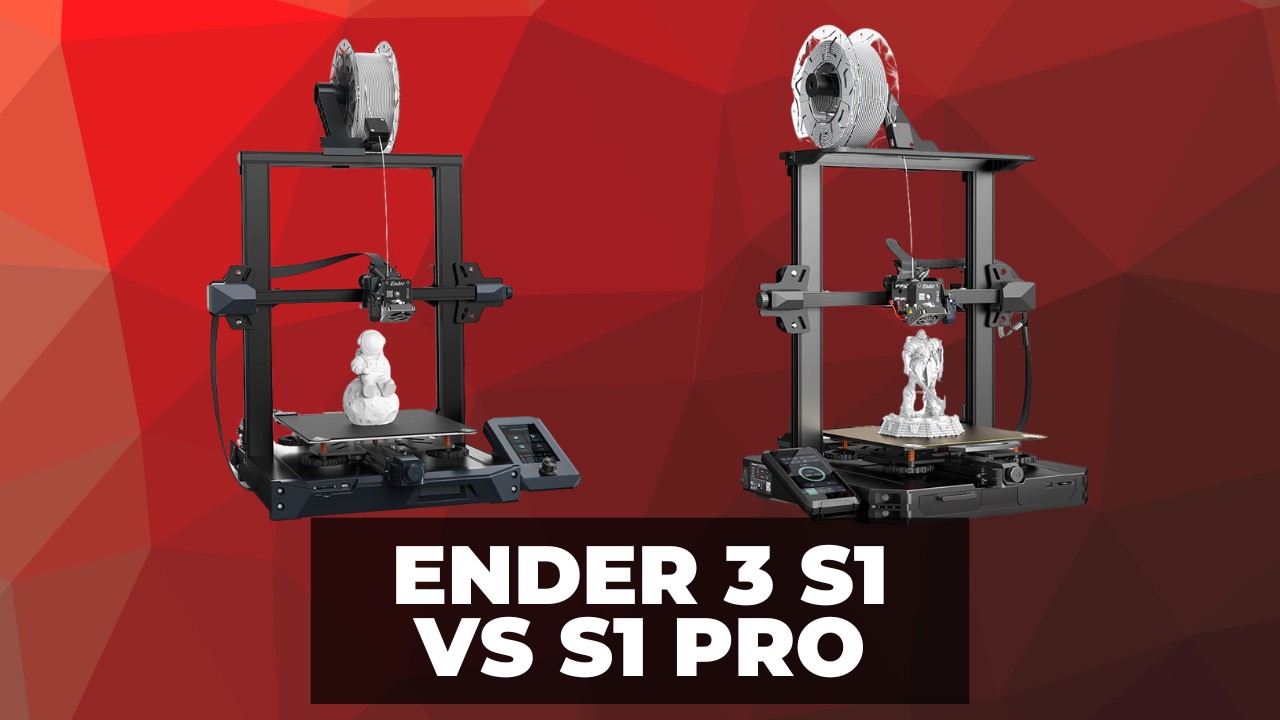
For Creality fans, the Ender 3 S1 and the Ender 3 S1 Pro can be sources of confusion. It’s clear that they’re different: the question is just how different they are, and what that actually means for you.
On one hand, the Ender 3 S1 already trumps many of its earlier, cheaper Ender models with its easier setup and better functionality. It’s not perfect, though. The S1 Pro was introduced as a simple way to upgrade key parts of the original S1’s design, like the extruder.
Aside from the extruder, Creality made a wide variety of small tweaks to the S1’s design in the Pro model. We’ll be going over all the functionalities that stay the same and which ones have been changed, plus a helpful summary of each printer.
By the end of it, you’ll have a clear idea of whether the S1 Pro is necessary for your printing projects – or if it’s an irrelevant money sink.
|
|
|
|
:
FDM
|
:
FDM
|
|
Build Volume:
220 x 220 x 270 mm
|
Build Volume:
220 x 220 x 270 mm
|
|
Filament Compatibility:
PLA, PETG, ABS, ASA, TPU, HIPS
|
Filament Compatibility:
PLA, PETG, ABS, ASA, TPU, HIPS, PA, nylon, carbon fiber, wood
|
|
Max extruder temp:
260°C
|
Max extruder temp:
300°C
|
|
Max bed temp:
100°C
|
Max bed temp:
110°C
|
|
Extruder Material:
Plastic (Sprite Extruder)
|
Extruder Material:
Fully metal (Sprite Pro Extruder)
|
|
Build Plate Tech:
PC Spring Steel
|
Build Plate Tech:
PEI Spring Steel
|
|
Touchscreen:
No
|
Touchscreen:
Yes
|
|
Platform Handle:
No
|
Platform Handle:
Yes
|
|
$379
|
N/A
|
Ender 3 S1 vs S1 Pro: A Quick Summary
Ender 3 S1
- Price: Check latest price at Creality here / Amazon here
- Printing technology: FDM
- Build volume: 220 x 220 x 270 mm
- Filament compatibility: PLA, PETG, ABS, ASA, TPU, HIPS
- Layer height: 50 – 350 microns
- Printing accuracy: ± 0.1 mm
- Max extruder temp: 260°C
- Max bed temp: 100°C
- Connectivity: USB, SD Card
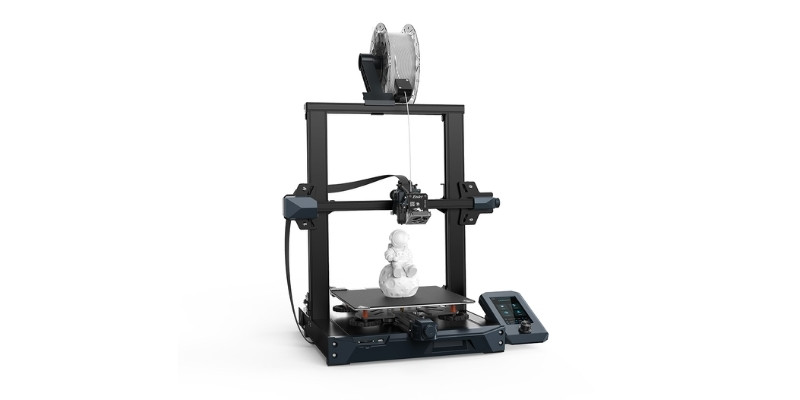
Pros
A great budget printer that works for a variety of different people and projects.
Filament runout sensor and automatic bed-leveling.
Easy assembly and needs less tinkering or upgrades than cheaper models.
Cons
Lacking in build volume.
Released in December 2021, the Ender 3 S1 has been holding up well so far as a budget printer that works for a variety of different people and projects. It has a filament runout sensor and automatic bed-leveling, which some predecessors lacked.
Just like every other Creality device with auto bed-leveling, the S1 uses CR Touch. This technology uses a probe to feel the surface of the bed. It’s essentially the same as BLTouch, but rebranded to fit with Creality.
In addition to those quality of life features, the Ender 3 S1 has easy assembly and needs less tinkering or upgrades than cheaper models. That means the S1, despite the low price, is relatively accessible for newbies (or the time poor).
Although it’s a bit more expensive than similar non-Creality printers like the Anycubic Vyper or the Voxelab Aquila S2, you’re paying for the community that Creality offers. That alone can make the printer worth it to some.
Regardless, there are some things lacking in the S1. It has a build volume of 220 x 220 x 270 mm, which limits you in how much you can print.
The extruder can also pose a problem. Creality gave the S1 a direct drive extruder instead of a Bowden extruder, which is carried over in the Pro version and helps prevent extruder-related issues. The issue is that it’s made of plastic.
It can only handle a heat of up to 260°C, and the plastic might wear down eventually. That’s a problem if you want to use pickier– and nicer– filaments like nylon.
Overall, the Ender 3 S1 is a good all-rounder that’s easy to use. Plus, it’s a decent budget option with more functionality than the more extreme budget printers out there.
Ender 3 S1 Pro
- Price: Check latest price at Creality here / Amazon here
- Printing technology: FDM
- Build volume: 220 x 220 x 270 mm
- Filament compatibility: PLA, PETG, ABS, ASA, TPU, HIPS, PA, nylon, carbon fiber, wood
- Layer height: 50 – 350 microns
- Printing accuracy: ± 0.1 mm
- Max extruder temp: 300°C
- Max bed temp: 110°C
- Connectivity: USB, SD Card
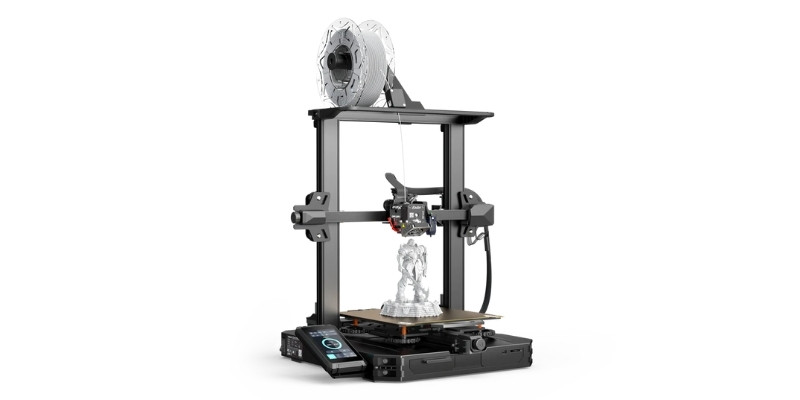
Pros
Max extruder temperature of 300°C, 40°C more than the regular S1.
Uses a PEI spring steel magnetic build plate for working with more finicky filaments.
More filament options and giving a slightly smoother experience.
Cons
Same small build volume as the S1.
It didn’t take long for Creality to release the Ender 3 S1’s upgrade. The S1 Pro came out in late February of 2022, just a couple months after the S1. Clearly, it was made to be an option for people who like the S1 but need a little more refinement and power.
The biggest upgrade is that the extruder on the S1 Pro has a full metal body. The max extruder temperature is 300°C, which is 40°C more than the regular S1.
Alongside the increased max bed temperature of 110°C, this allows the S1 Pro to print specialty filaments like nylon and carbon fiber. Another handy feature for working with finicky filaments is the new PEI spring steel magnetic build plate.
As expected for the price, you’ll still be stuck with the regular 220 x 220 x 270 mm build volume. The S1 Pro isn’t a downgrade in any category, though. It still has the CR Touch automatic bed-leveling as the S1, the filament runout sensor, and even the same motherboard.
From what we can tell, the Ender 3 S1 Pro was mainly focused on adding more filament options and giving a slightly smoother experience. The Pro is equipped with a touch screen instead of the usual rotary control for that sake.
Fundamentally, the S1 Pro is a flat increase in functionality traded for a flat increase in price. It might be a hard sell if you’re prioritizing budget, but it has some great upgrades that are definitely worthwhile.
We actually tested the S1 Pro hands-on here, so check it out for more information on what it’s like.
The Similarities
There’s a lot to like with either version of Ender 3 S1, and it might not be necessary to upgrade to the Pro model depending on what projects you want to complete.
The main difference between the original Ender 3 S1 and other similar printers (like the aforementioned Aquila S2) are the quality of life features. With the S1, you have a filament runout sensor, automatic bed-leveling through CR Touch, and a generally quieter printer. All those are the same if you get the S1 or the S1 Pro.
It might seem like a no-brainer, but you should keep in mind that you’ll have access to a huge community regardless of which printer you choose. That means information and parts are going to be plentiful in case you want to upgrade either machine.
In this case, it could be worthwhile to invest in the Ender 3 S1 and do any upgrades yourself if you still feel inclined.
To recap, we listed the basic similarities between the two so you can get a better idea of which features you’ll have access to no matter what:
- Filament runout sensor + resume printing functionality
- Automatic bed-leveling
- Direct Drive extruder
- Manual belt tension knobs
- Built-in toolbox
- LED light strip
- Assembly time (~15-30 minutes)
- 220 x 220 x 270 mm build volume
- ~36db printing according to our previous tests (32-bit silent motherboard)
- Compatibility with PLA, PETG, ABS, ASA, TPU, and HIPS
- Creality community
The Differences
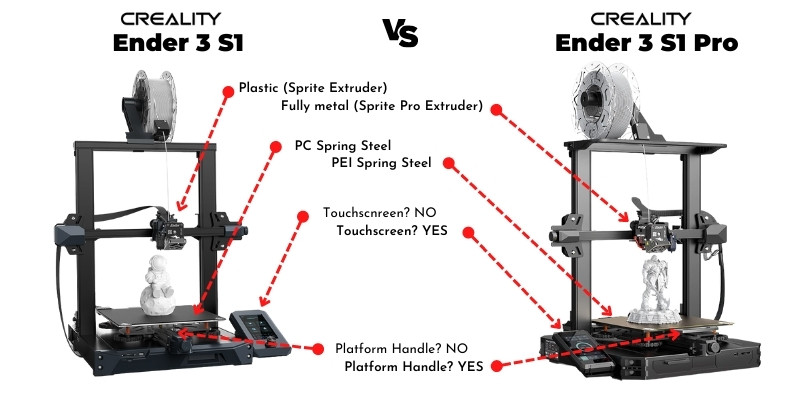
Before we dive into the smaller details, let’s look at an overview of the main differences between the Ender 3 S1 and the S1 Pro.
| Ender 3 S1 | Ender 3 S1 Pro | |
|---|---|---|
| Price | $379 | $479 |
| Extruder Material | Plastic (Sprite Extruder) | Fully metal (Sprite Pro Extruder) |
| Build Plate | PC Spring Steel | PEI Spring Steel |
| Filament Compatibility | PLA, PETG, ABS, ASA, TPU, HIPS | PLA, PETG, ABS, ASA, TPU, HIPS, PA, Wood, Nylon, Carbon fiber |
| Touchscreen? | No | Yes |
| Platform Handle? | No | Yes |
You also should consider the price of upgrades. Do you only want one or two of the features the S1 Pro has? Well, there’s no reason you can’t buy them for your regular S1.
The build plate is an easy swap, but you can also upgrade the heat break in the extruder to a metal one without much hassle or cost. It will give many of the same benefits as a fully metal extruder and can be found for less than $20. There are bi-metal options, too!
Extruder
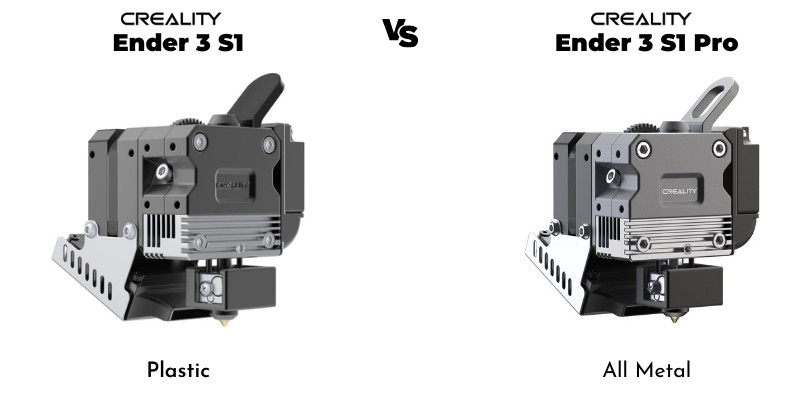
The biggest difference between the S1 and the S1 Pro is the extruder. Tragically, the original S1 is stuck with a plastic extruder that can’t handle temperatures higher than 260°C.
On the flip side, the Pro has a fully metal extruder with a maximum temperature of 300°C. This upgrade will make it possible to work with different filaments that need higher temperatures, so it’s a must-have if you plan on using things like wood or nylon in your projects.
It could be a waste, though, if you aren’t sure about needing the upgrade. The plastic extruder will hold up well enough if you won’t use any specialty filaments. It’s also unlikely to break down unless you push it beyond its temperature limits.
Remember, it’s possible to upgrade the extruder. You can actually get the entire extruder upgraded to the Sprite Pro (which is the model used in the S1 Pro) with the kit sold at Creality’s official store.
Upgrade Kit for these Creality 3D printers: Ender 3, Ender 3 V2, Ender 3 Pro, Ender 3 MAX, Supports printing flexible filament, BL Touch, CR Touch
Build Plate
The Ender S1 Pro’s PEI Spring Steel build plate is another serious upgrade that goes hand in hand with the improved extruder. Compared to the original S1’s PC Spring Steel, the adhesion and ease of print removal are going to be much better with the Pro.
But it’s not an absolute necessity. Unlike the extruder upgrade, you can still use specialty filaments even with the S1’s build plate. It will probably make the process more difficult, though!
Filament Compatibility
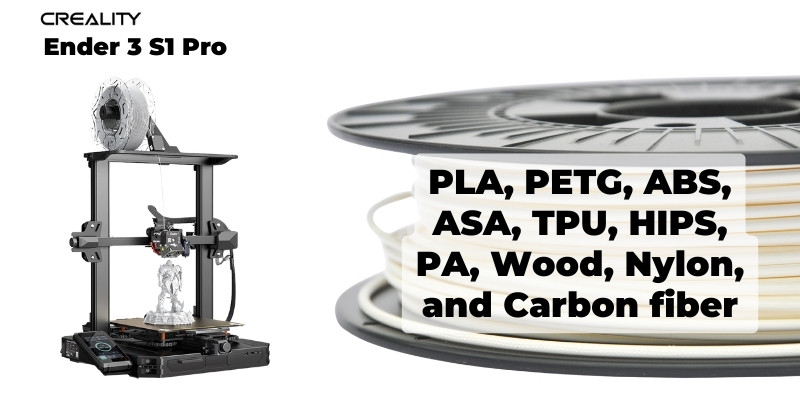
Thanks to the Sprite Pro extruder and the PEI built plate, the Ender 3 S1 Pro is simply better at handling filaments like PA, nylons, woods, and even carbon fiber. It even has an upgraded thermistor, which helps measure temperature more accurately.
If you are certain you want to make use of those filaments, then the S1 Pro is a must-have. You can technically make upgrades to the extruder, base plate, and thermistor on the S1, but it’s going to cost more– in time and in money– than purchasing the Pro upfront.
Of course, the Ender 3 S1 already has access to common filaments like PLA, PETG, ABS, and ASA. It can even print with TPU and HIPS, so it’s not as if you’ll be lacking in filament types to try.
Ease of Use
To make the higher price worthwhile (and the measure up to other printers in the price bracket), Creality gave the S1 Pro some ease of use features that the S1 doesn’t have.
The most important of these is the full-color touchscreen. Cheaper Ender printers use a rotary knob to select options, so having a touchscreen is a huge upgrade.
Another small bonus is a platform handle added to the build plate. It’s just a minor change that makes things that much easier and intuitive.
Price
- Ender 3 S1 – $379
- Ender 3 S1 Pro – $479
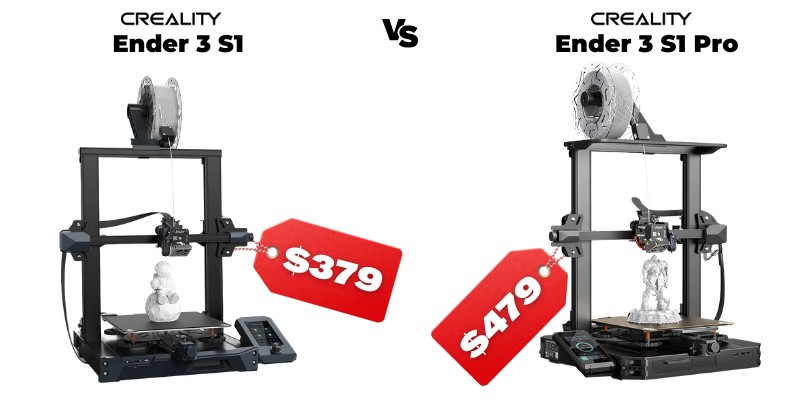
Before we can seriously talk about the differences in features, we need to talk about the price points for the S1 and the S1 Pro.
At base, the S1 is $379 compared to the Pro’s $479. That $100 gap is a huge difference for anyone on a strict budget.
If you’re seriously considering the S1 Pro, then it might be worthwhile to shop around for other printers in the $400 – $600 range (like the Anycubic Vyper, Prusa Mini, Flashforge Creator Pro 2, or even Ender 5 Plus) instead of only looking at the S1 and S1 Pro.
We covered many of these and more in an article ranking the best FDM printers, so take a peek if you’re still unsure if the S1 line is for you.
|
|
|
|
:
FDM
|
:
FDM
|
|
Build Volume:
220 x 220 x 270 mm
|
Build Volume:
220 x 220 x 270 mm
|
|
Filament Compatibility:
PLA, PETG, ABS, ASA, TPU, HIPS
|
Filament Compatibility:
PLA, PETG, ABS, ASA, TPU, HIPS, PA, nylon, carbon fiber, wood
|
|
Max extruder temp:
260°C
|
Max extruder temp:
300°C
|
|
Max bed temp:
100°C
|
Max bed temp:
110°C
|
|
Extruder Material:
Plastic (Sprite Extruder)
|
Extruder Material:
Fully metal (Sprite Pro Extruder)
|
|
Build Plate Tech:
PC Spring Steel
|
Build Plate Tech:
PEI Spring Steel
|
|
Touchscreen:
No
|
Touchscreen:
Yes
|
|
Platform Handle:
No
|
Platform Handle:
Yes
|
|
$379
|
N/A
|
Ender 3 S1 vs Ender 3 S1 Pro– The Bottom Line
Ultimately, the main differences between the Ender 3 S1 and the S1 Pro are filament compatibility and price. The S1 is the winner if budget is more of a concern, and the S1 Pro is significantly better for a wide range of filaments.
The S1 can still use filaments like TPU and HIPS. TPU alone opens many doors for interesting and practical 3D prints, with phone cases being just one popular choice.
It also has access to the same ease of use features, like a runout sensor and auto bed-leveling. With that in mind, there are really not that many reasons to purchase the S1 Pro.
You should only opt for the S1 Pro if you’re certain that using nylon, carbon fiber, wood, and similar high-temperature filaments is a deal breaker for you. If that’s what you need for the projects you have in mind, then the Ender 3 S1 is going to be seriously disappointing.
Related articles:

